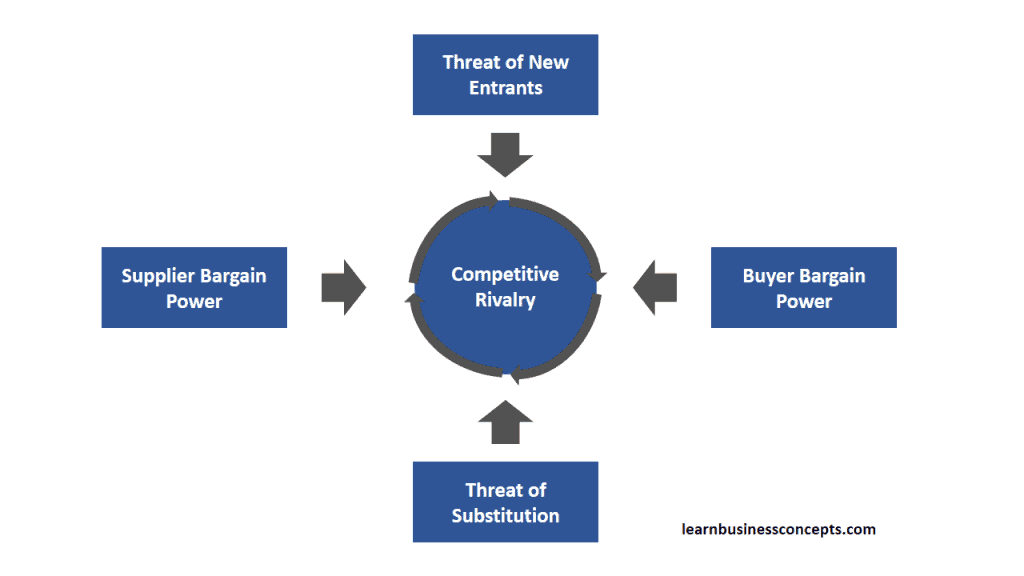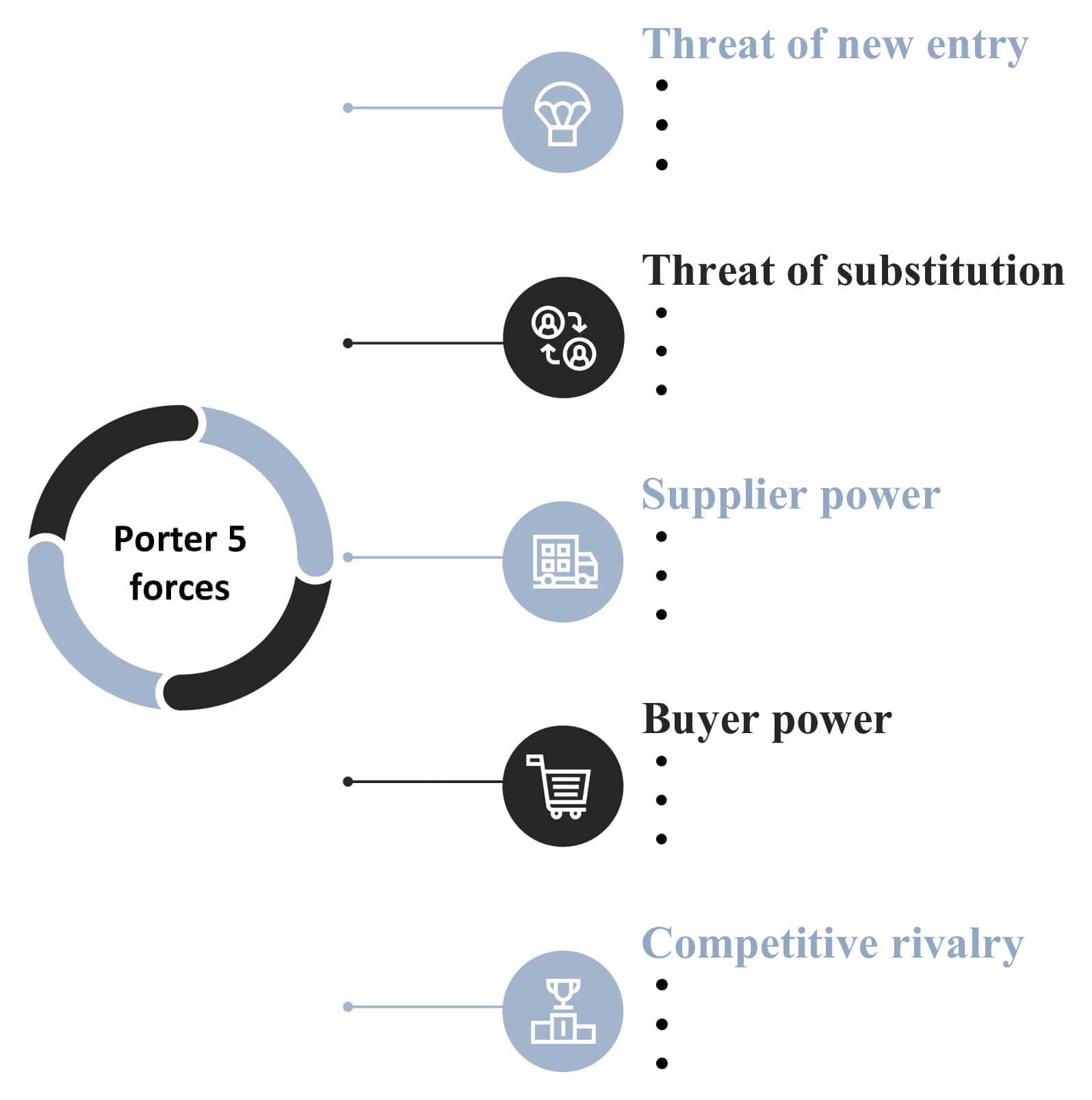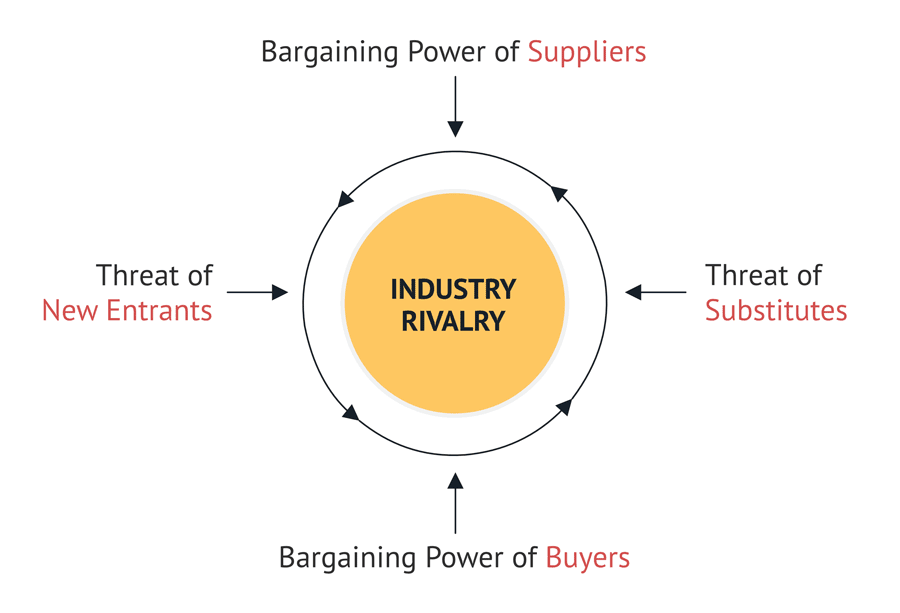Five Forces Analysis is
a framework
for analyzing industry profitability. It was proposed by management scholar
Michael Porter
and is used when conducting micro-analysis of the business environment.

Five Forces analysis uses two external factors, “threat of new entrants” and “threat of substitute products,” and three internal factors, “competition within the industry,” “bargaining power of sellers,” and “bargaining power of buyers.” Do the analysis. Although it is a classic framework, it is still an analysis method used by many companies.
Purpose of Five Forces Analysis

There are three purposes for performing Five Forces analysis:

Objective 1: Improve profitability Five forces analysis helps you identify your company’s competitive advantage and develop strategies to improve profitability. In particular, by being able to identify threats to the future, such as new entrants and substitute products, you can smoothly respond to threats when they actually appear.

Objective 2: Deciding on new entry or business withdrawal The degree of competition and industry structure revealed by Five Forces analysis can be useful for management decisions regarding new entry or business withdrawal.

Objective 3: Optimal allocation of management resources Considering the optimal allocation of management resources is essential when formulating management strategies. The company’s opportunities and threats revealed through Five Forces analysis are important materials for determining the allocation of management resources.

Reference article


